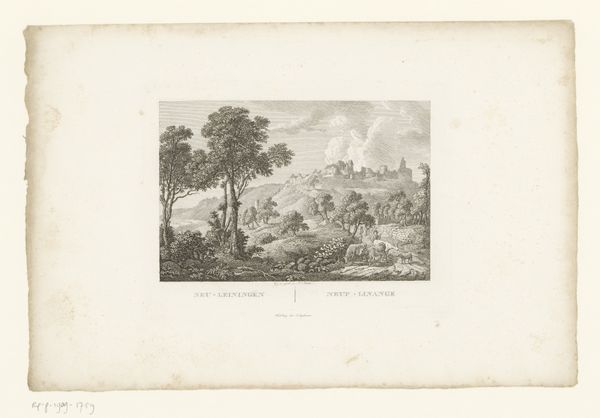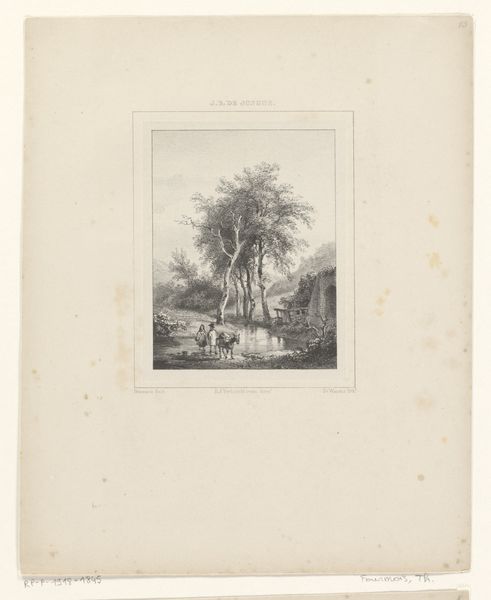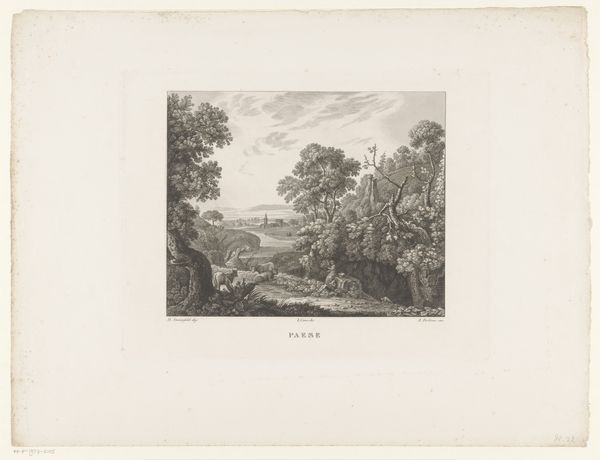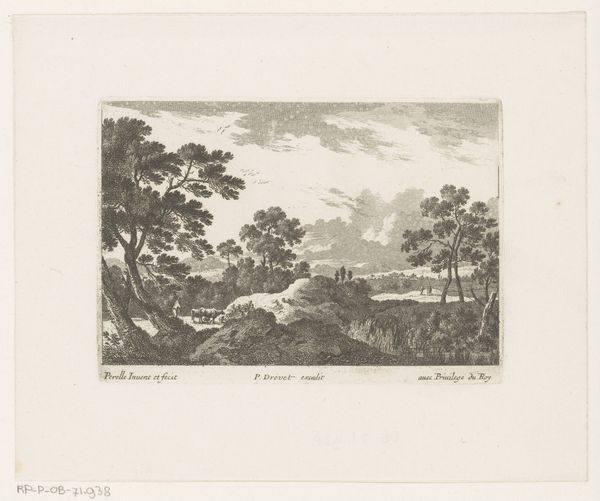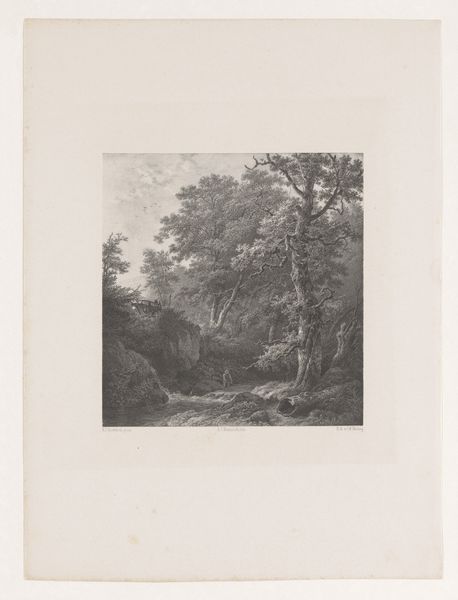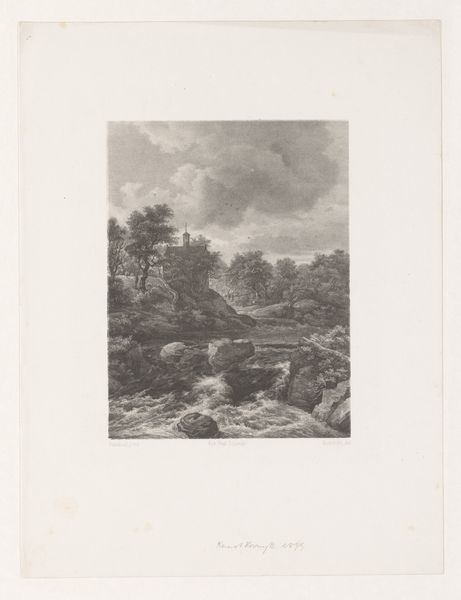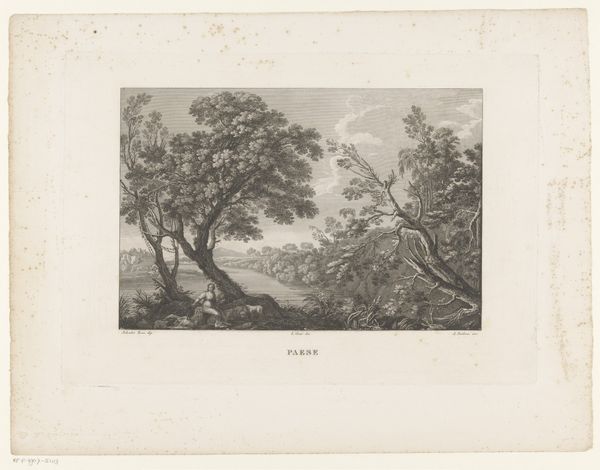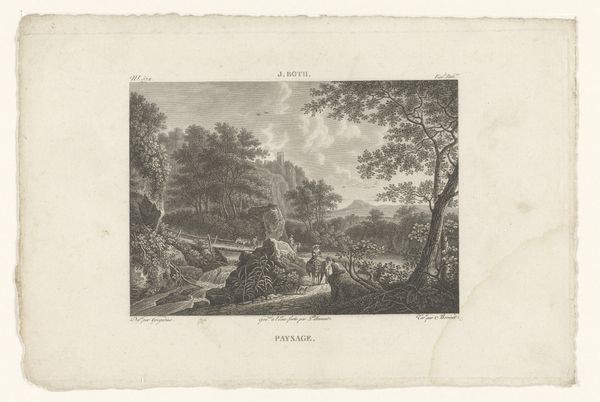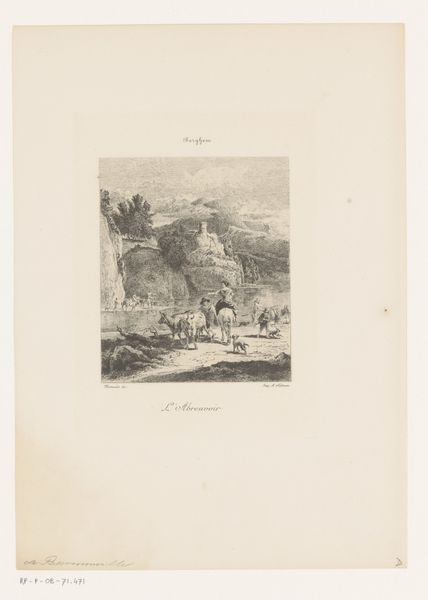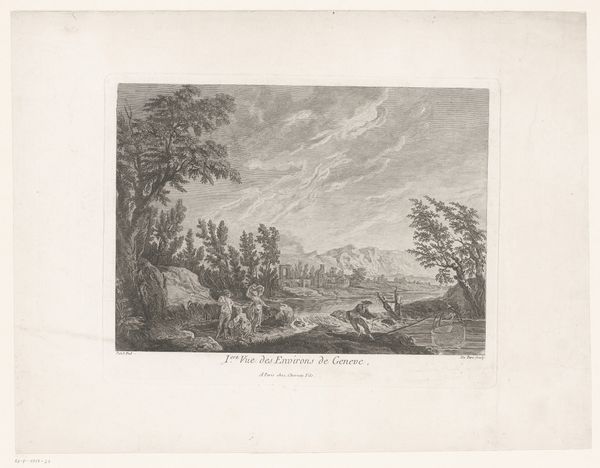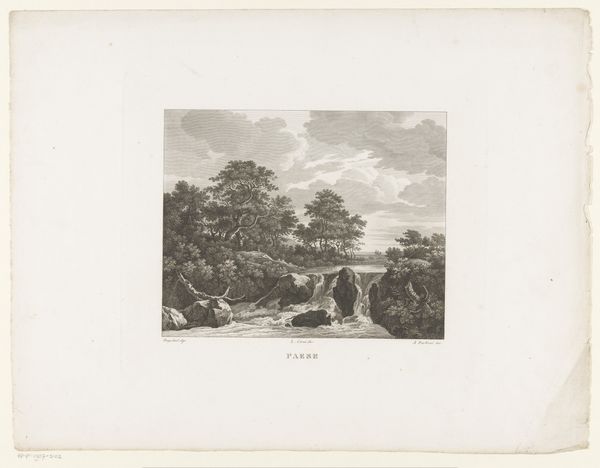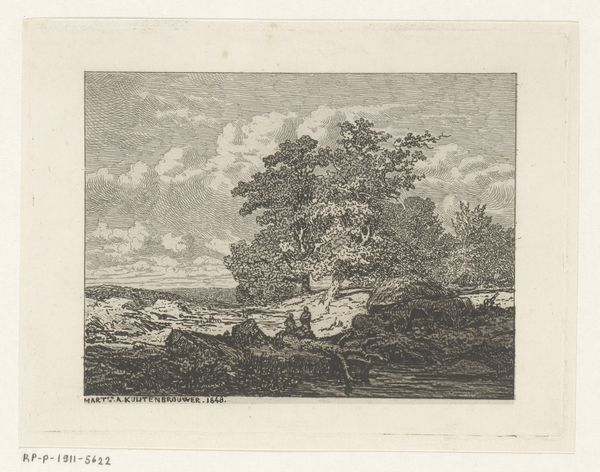
print, engraving
#
neoclacissism
# print
#
landscape
#
genre-painting
#
engraving
Dimensions: height 261 mm, width 166 mm
Copyright: Rijks Museum: Open Domain
Curator: This engraving, "Landscape with Herders bij hun Vee," which translates to "Landscape with Herdsmen by Their Cattle", was created sometime between 1770 and 1831 by Claude Niquet. The work adheres to the visual conventions of Neoclassicism and uses delicate hatching to define figures within the scene. What are your first impressions? Editor: A pastoral dream! It feels idyllic—soft light, gently sloping hills. The engraver has managed a remarkable tonal range despite the limitations of the medium. Curator: Indeed. Neoclassicism sought to evoke an idealized past, often referencing classical antiquity. Note how Niquet situates his figures in a timeless, almost theatrical setting. The scene promotes agrarian values during the industrializing late eighteenth and early nineteenth centuries, perhaps functioning as propaganda during that era. Editor: The arrangement of the figures definitely contributes to a sense of composed calm. There is also this remarkable balance between the detailed foreground, especially the figures of the herders and the trees in the background that create the impression of depth. And all those animals resting, eating— it suggests the slower rhythms of the natural world, something increasingly distant in urbanizing Europe. Curator: The presence of herdsmen also speaks to broader socio-economic transformations in this era. By showing an everyday, agricultural lifestyle, Neoclassical artwork idealizes this type of simple rural existence as the ultimate symbol of industriousness and moral virtue during an epoch defined by dramatic change and revolutionary sentiment. Editor: Yes, seeing it in light of industrialization shifts its meaning, adding a layer of wistful yearning. But looking at how light is depicted, diffused yet precise... you lose yourself in the landscape itself, forgetting, for a moment, all the socio-historical underpinnings. Curator: True. The genius of this piece lies, at least in part, in its ability to operate on multiple levels—as social commentary, and aesthetic object. Editor: A landscape suspended between two worlds, real and imagined. I see now how all of the different techniques create meaning far beyond just creating an aesthetic scene.
Comments
No comments
Be the first to comment and join the conversation on the ultimate creative platform.
